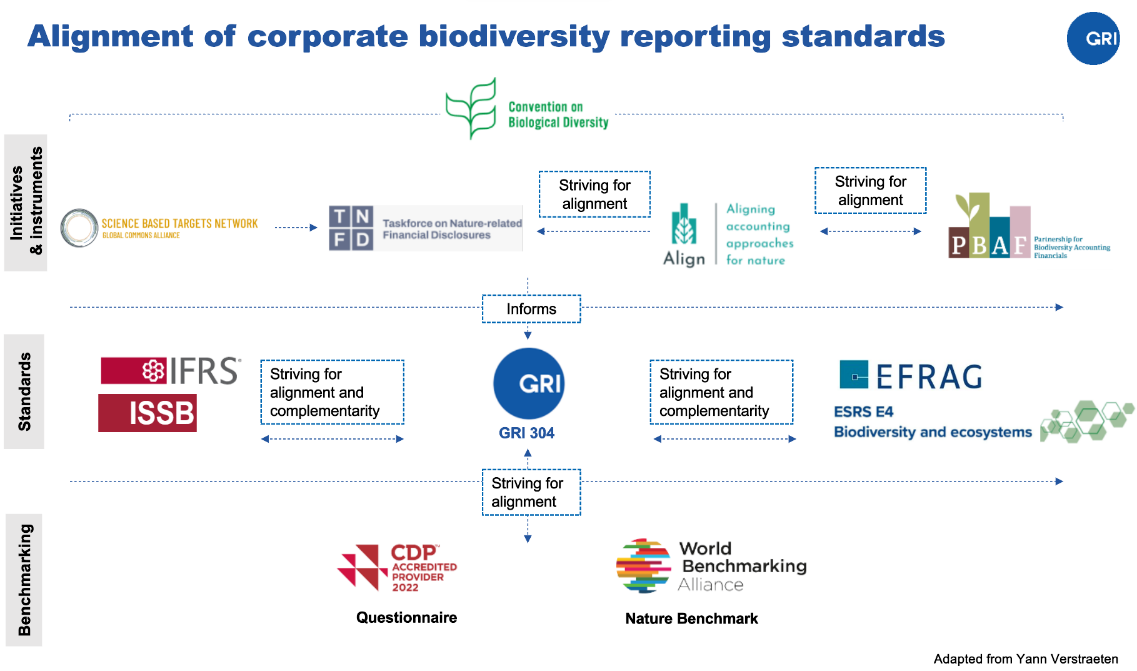A New GRI Biodiversity Standard Will Help Ensure Accountability on Impacts To Build Back Biodiversity

GRI North America is excited to announce that after two years of development, GRI will release GRI 101: Biodiversity 2024, which updates, expands, and replaces GRI 304: Biodiversity 2016. A launch webinar will be hosted on February 1st, 10:30 AM ET featuring speakers from Birdlife, UEBT and BNP Paribas Asset Management.
GRI 101 helps organizations to better understand which decisions and business practices lead to biodiversity loss, where in their value chain impacts occur, and how they can be managed. This, in turn, will support organizations to be more resilient to system shocks, and respond to global concerns about biodiversity loss and raising awareness from consumers, investors and other stakeholders. The disclosures in the new Biodiversity Standard align with the goals and targets of the Kunming-Montreal Global Biodiversity Framework and are consistent with the TNFD recommendations and ESRS standard on biodiversity and ecosystems.
Recently, GRI's Head of North America participated in the Wildlife Habitat Council’s Business and Nature Summit, contributing to two sessions where nature took center stage in the discussions. In the first session, GRI participated in an open conversation about the nature-related reporting landscape. The discussion covered how standards, frameworks, and science-based targets work together, providing organizations with a strong foundation to navigate jurisdictional happenings like the EU’s CSRD as well as increasing stakeholder expectations. GRI was pleased to join the session with organizations it has closely partnered with over recent years. Two organizations on GRI’s Technical Committee to revise the GRI Biodiversity Standard were represented in the session: CDP and SBTN. TNFD was also represented, which has been a close collaborator of GRI. Both organizations mutually contributed technical expertise during the development of the TNFD framework and the revision of the GRI Biodiversity Standard.
“The interoperability and the fact that we developed the TNFD framework with our knowledge partners is a key point. I would highlight that the journey that you advance in nature is already valuable. Whether you fill in a CDP forest questionnaire or whether with GRI reporting you have already prioritized nature related issues as part of your materiality determination process or even if you disclose using the biodiversity standard.”
TNFD Representative
In the second session, a Q&A session unfolded, featuring key players from PNB Paribas, Domini Impact, and CERES. The focal point? Nature Action 100, a global investor initiative to address the urgent crisis of nature and biodiversity loss. It's become increasingly evident that capital markets are interested in understanding the impacts and dependencies that businesses have on biodiversity. Failure to disclose or engage in biodiversity-related issues is now being raised as a red flag by investors. Organizations using the GRI Standards are able to report their impacts including impacts on nature, providing useful decision information to stakeholder groups, including investors.

